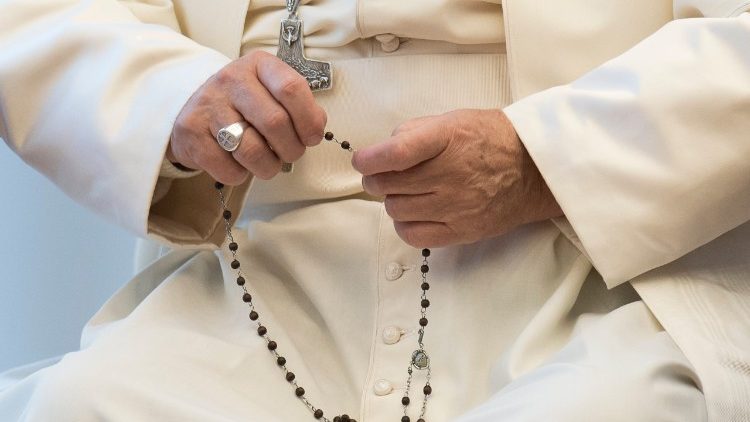
“Mater misericordiae”, the Latin for “Mother of mercy”; “Mater spei”, or “Mother of hope”; and “Solacium migrantium”, or “Solace of migrants” are the new invocations to the Blessed Virgin Mary in the Litany of Loreto, which is often recited at the end of the Rosary.
The addition that Pope Francis has made to the Litany of Loreto, was made public by the Congregation for Divine Worship and the Discipline of the Sacraments, on Saturday. It was timed for the feast of the Immaculate Heart of Mary, June 20.
In a letter to the presidents of bishops’ conferences worldwide, Cardinal Robert Sarah, the Prefect of the Congregation, and its Secretary, Archbishop Arthur Roche, note that through the course of centuries, Christians have been using innumerable invocations and titles to call upon the Virgin Mary, “as the privileged and sure way to an encounter with Christ”.
Responding to the needs of our time
“Referring to the present times, marked by feelings of uncertainty and trepidation, the People of God,” they say, “devoutly recourse to her, full of affection and trust.”
“Discerning this sentiment and welcoming the desires expressed,” the Congregation explains, “the Supreme Pontiff, Pope Francis, wishes to provide that in the formulary of the litany of the Blessed Virgin Mary, called ‘The Litany of Loreto’, the invocations ‘Mater misericordiæ’, ‘Mater spei’ and ‘Solacium migrantium’ should be inserted.”
According to directions, the invocation, “Mother of mercy” is to be inserted after “Mother of the Church”, “Mother of hope” after “Mother of Divine Grace” and “Solace of migrants” after “Refuge of sinners”.
In an interview, Archbishop Roche explained that these invocations “respond to the realities of the time that we are living”. Speaking to Vatican News, he said that many people across the world who are afflicted in many ways, not only by the Covid-19 pandemic, but also forced from their homes because of poverty, conflict and other reasons, are invoking Our Lady.
Invocations not new
Archbishop Roche said that the Holy Father wanted to respond to this moment by including these invocations. The archbishop pointed out that these invocations are not new because they are part of the tradition of the Church that go back many centuries, such as the prayer and hymn, “Hail Holy Queen, Mother of mercy, Hail our hope…”.
“All these invocations,” he said, “have been put into the Litany of Loreto, which is beloved by people throughout the world.” “It is now responding to a real need that there is in our world today for the assistance of Our Blessed Lady.”
What is the Litany of Loreto?
The Litany of Loreto takes its name from the Marian shrine of Loreto in Italy, where it is believed to have been used as far back as 1531. It was officially approved in 1587 by Pope Sixtus V, who suppressed all other Marian litanies used publicly. The Litany of Loreto is the only approved Marian litany. However, many more Marian litanies were and are in use, but are designated for private devotion, as is evident, for example, in the so-called Officia Mariana.
Through the centuries at least 7 new invocations to Mary were added. Saint Pope John Paul II added “Mother of the Church” in 1980, and “Queen of families” in 1995. Pope Francis has now added three more.
There are also other litanies such as of Saints, of the Names of Jesus, of the Sacred Heart of Jesus, of Saint Joseph (1909), of the Precious Blood and also of Divine Mercy.
Source: Vatican News





